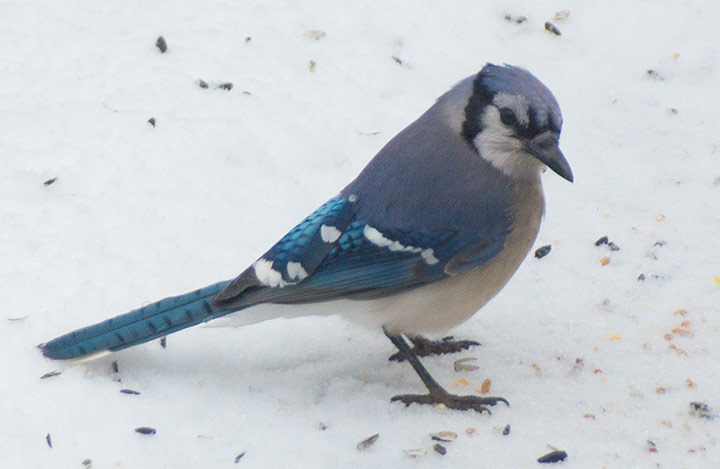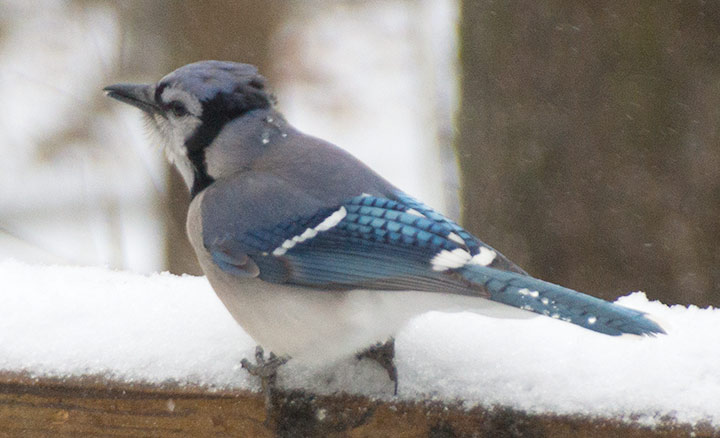Living in the woods, we see and hear Blue Jays (Cyanocitta crostata) around frequently, but they seldom come to our feeders. However, the snow and ice we had yesterday and today have made them desperate. This handsome specimen shows off its iridescent blue colors very nicely. Interestingly, the blue colors of this bird, like most other birds, are not due to pigments. The microscopic structure of the feathers interact with light in such a way that blue is reflected. If one crushes one of the blue feathers of a Blue Jay, the color disappears.
Blue Jays produce a variety of loud calls, including very good imitations of the screeching calls of Red-shouldered Hawks. I have read two explanations of why they are called “jay”. One gives the origin from the Latin “gaius”. This word has an archaic meaning of “a person who chatters impertinently”, but can also mean “merry” or “gay”. The other explanation is that one of their calls sounds like “jay, jay”.
Discover more from A Naturalist's Journal
Subscribe to get the latest posts to your email.



I too have observed blue jays at the feeder in past days – and I notice the other birds given them a wide berth